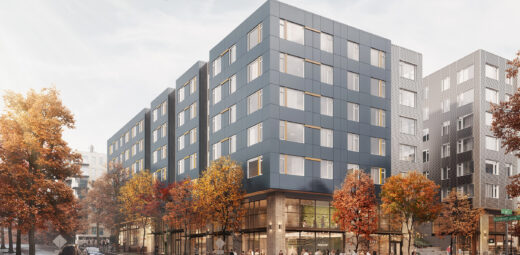
Apr 26Yes, in My Backyard
Solving the affordability crisis in the Pacific Northwest is a challenge too big for any one organization. It takes countless organizations, residents, neighborhoods, and levels of government to bring a community together and deliver on the promise of spaces where all are welcome.
A neighborhood that rose to the challenge and welcomed an affordable housing development in their community is the Roosevelt Neighborhood Association (RNA) in Seattle. To learn a little more about how they rallied their neighbors, we met with Jay Lazerwitz, RNA Chair.
“Around 2010, looking at the trends for the City of Seattle, we concluded that our neighborhood would have to change to meet the needs of a growing population,” Jay said. “As a community, we wanted to have some say in those decisions.”
Pulling together as a group, they began thinking of a community centered on walkability, access to public transportation, dense housing, and something greater than the urban village model. “The days of sleepy Seattle were gone, but what might stand in its place had the potential to be even better.”
Looking at the master plan for Sound Transit, they began advocating for the light rail extension to be moved from a stop near I-5 to the heart of the neighborhood. “Achieving this checked so many boxes for us,” said Jay. “It would make our neighborhood commuter friendly and more walkable. But we also knew if we weren’t intentional, the neighborhood could become unaffordable for the families and residents we were hoping to attract. It was around this time we started having conversations about the idea of an affordable housing developer using excess land next to the new Sound Transit station.”
“There was so much we didn’t know,” Jay told us. “We started attending workshops, land use academies, educating ourselves in transit-oriented design, and getting to know local housing developers.” Built into all this learning were powerful conversations about affordability and the neighborhood they wanted to become.
Eventually, those conversations lead to a joint development between Bellwether Housing and Mercy Housing Northwest called Cedar Crossing. “Cedar Crossing is the culmination of years of work and dedication, but it is only the beginning,” said Jay. “We have three more projects in the neighborhood, and we are challenging ourselves and other neighborhoods throughout Seattle to do more.”
On behalf of all of us at Mercy Housing Northwest and the residents who call Cedar Crossing home, we want to thank the RNA for saying, “yes, to affordable housing in their backyard.”
No related posts.
Stay Up To Date
Get news on Mercy Housing and inspiring stories of change delivered to your inbox.


